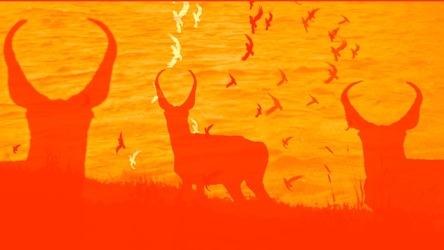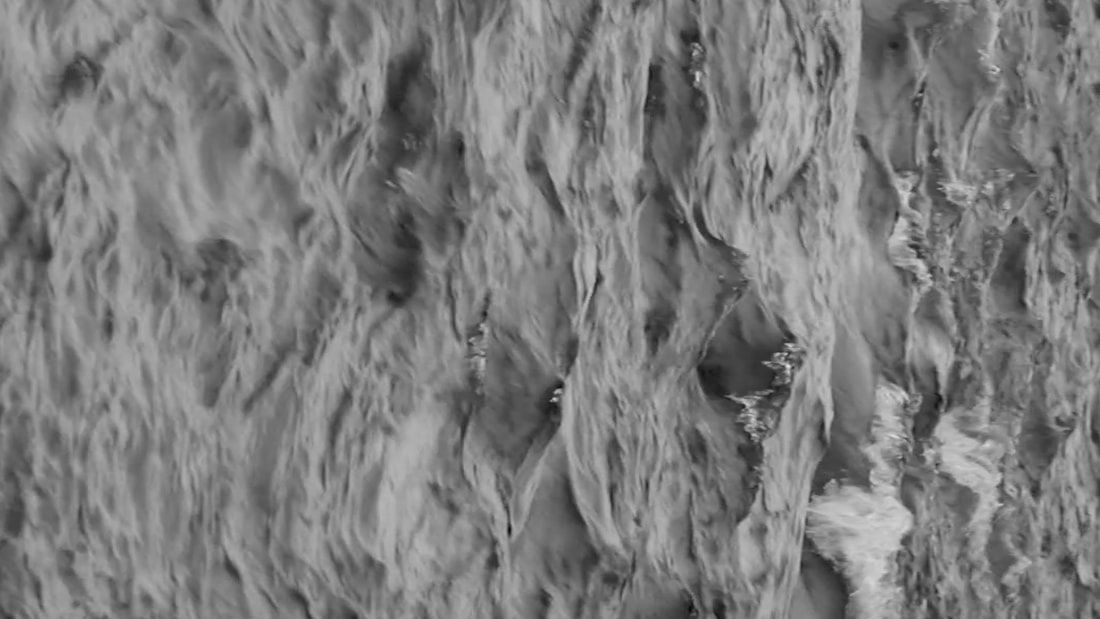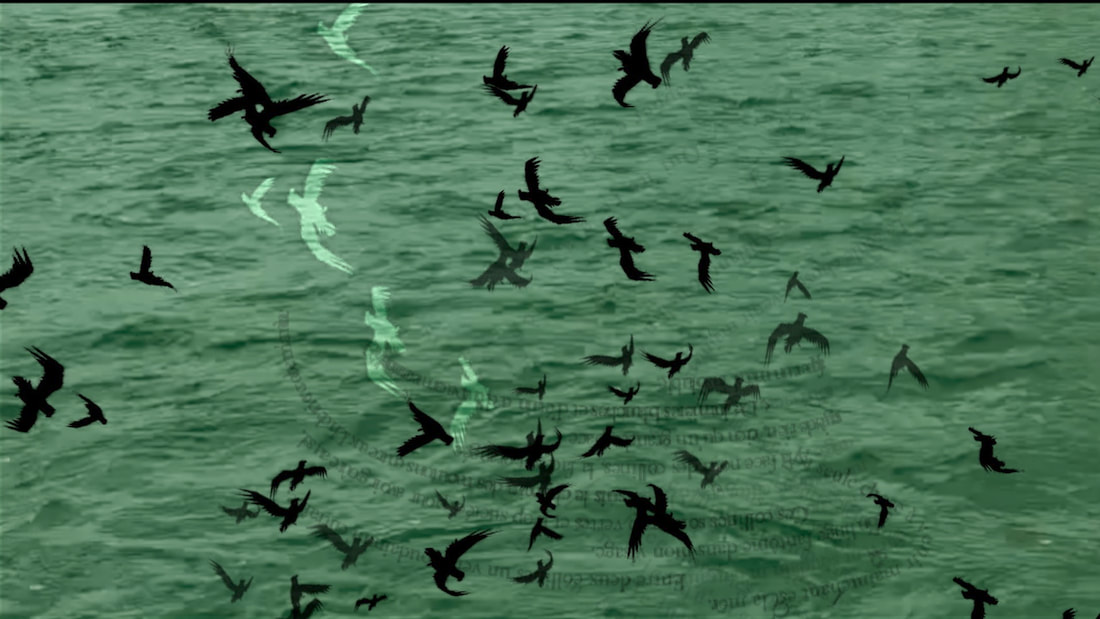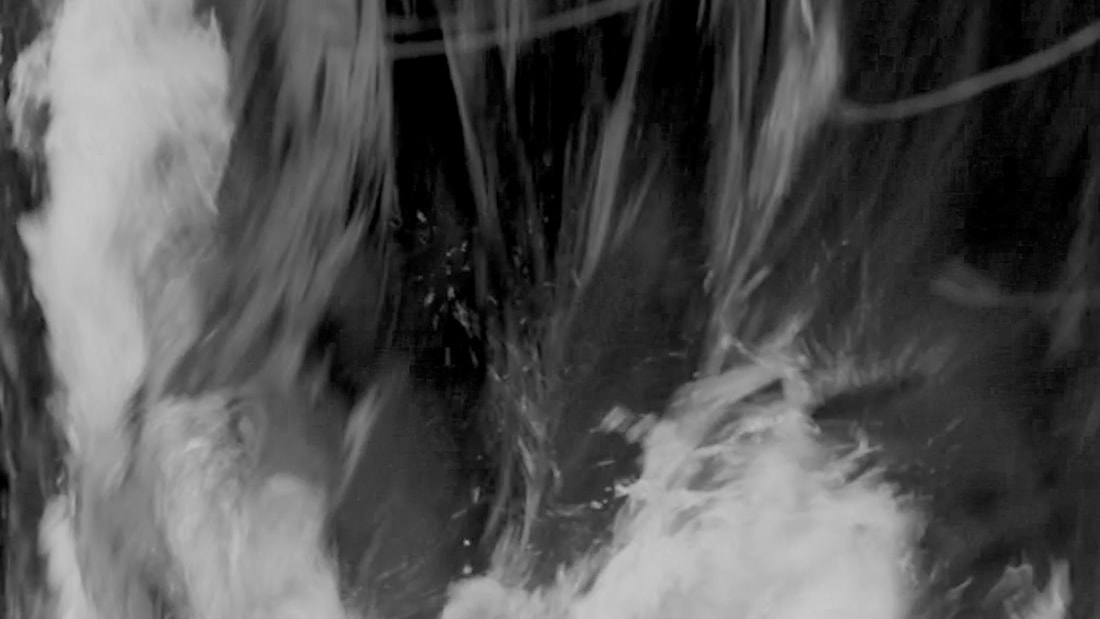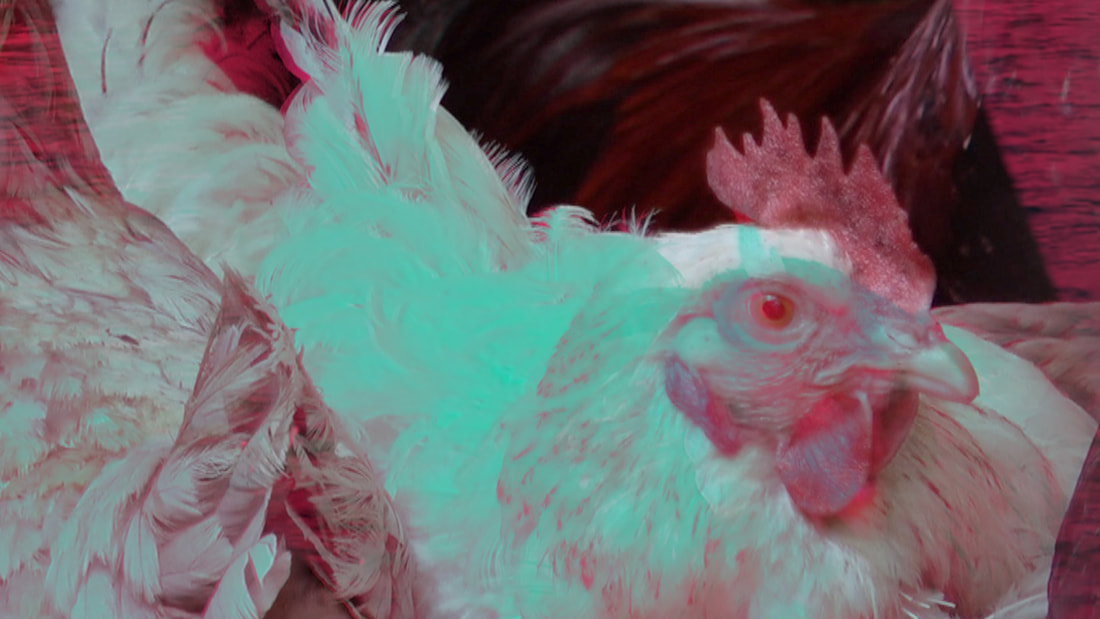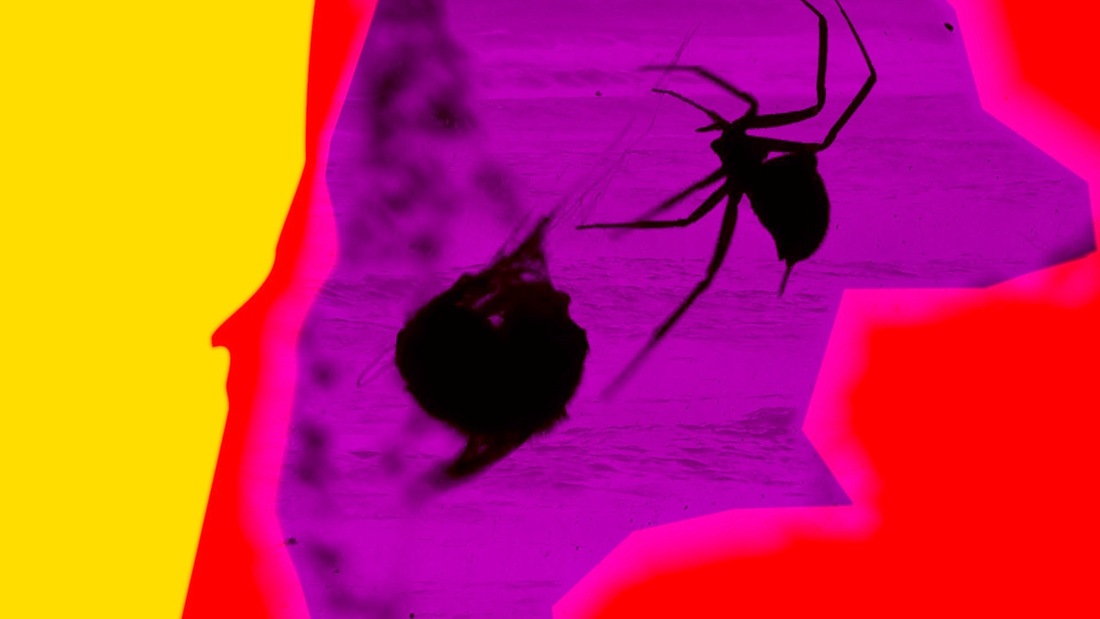James Coleman
The film is an interpretation of Riverrun, the last pages of Finnegans Wake by James Joyce. The text is rich and consists of a rhythmic, referenced invented language. It is a flow of sounds, the voice of the river in motion. It is a woman’s journey as she makes her way towards the great ocean of time. It is both cosmic as it calls on ancient rhythms and elemental forces, and specific as it refers to landmarks that place it on the River Liffey in Dublin.
I have taken elements from the text and given them a visual voice.
The installation explores my interest in surfaces. How can the surfaces of things evoke thought and carry affects that are resonant? How do theses surfaces have the potential to hold, project, contain and inscribe ideas and feelings. Surfaces speak in many ways; through colour, shape, association, atmosphere and content. The walls of this space have memories. They absorb information, they have heard conversations, seen events and hold that information on their surfaces. They now also absorb the colours and information of the film projected. They reflect back on to us and we become pulled into that conversation just by looking. Why do these surfaces have this surface pulling power? What are they trying to say?
There are many types of looking and seeing. For this work, I have being playing with moving in and out of the normal human gaze. The fractured mirrors fragment the space into a different kind of viewing experience almost animal like…the insects eye. I have used editing techniques that disrupt the human gaze, by tilting the horizon line, by playing with verticals, by prioritising the cameras view underwater. I have prioritised the senses through saturated colour and sounds so the viewer can move outside their normal way of looking to a more haptic type of viewing experience.
I have taken elements from the text and given them a visual voice.
The installation explores my interest in surfaces. How can the surfaces of things evoke thought and carry affects that are resonant? How do theses surfaces have the potential to hold, project, contain and inscribe ideas and feelings. Surfaces speak in many ways; through colour, shape, association, atmosphere and content. The walls of this space have memories. They absorb information, they have heard conversations, seen events and hold that information on their surfaces. They now also absorb the colours and information of the film projected. They reflect back on to us and we become pulled into that conversation just by looking. Why do these surfaces have this surface pulling power? What are they trying to say?
There are many types of looking and seeing. For this work, I have being playing with moving in and out of the normal human gaze. The fractured mirrors fragment the space into a different kind of viewing experience almost animal like…the insects eye. I have used editing techniques that disrupt the human gaze, by tilting the horizon line, by playing with verticals, by prioritising the cameras view underwater. I have prioritised the senses through saturated colour and sounds so the viewer can move outside their normal way of looking to a more haptic type of viewing experience.
Les films est une interprétation de Riverrun, les dernières pages de Finnegans Wake de James Joyce. Le texte est riche et se compose d'une langue rythmée, référencée et inventée. C'est un flux de sons, la voix de la rivière en mouvement. C'est le voyage d'une femme qui se dirige vers le grand océan du temps. Il est à la fois cosmique, car il fait appel à des rythmes anciens et à des forces élémentaires, et spécifique, car il se réfère à des points de repère qui le situent sur la rivière Liffey à Dublin.
J'ai repris des éléments du texte et leur ai donné une voix visuelle.
L'installation explore mon intérêt pour les surfaces. Comment les surfaces des objets peuvent-elles évoquer la pensée et véhiculer des affects qui résonnent ? Comment ces surfaces ont-elles le potentiel de retenir, projeter, contenir et inscrire des idées et des sentiments ? Les surfaces s'expriment de multiples façons : par la couleur, la forme, l'association, l'atmosphère et le contenu. Les murs de cet espace ont une mémoire. Ils absorbent des informations, ont entendu des conversations, vu des événements et conservent ces informations sur leurs surfaces. Aujourd'hui, ils absorbent également les couleurs et les informations du film projeté. Ils se reflètent sur nous et nous sommes entraînés dans cette conversation rien qu'en la regardant. Pourquoi ces surfaces ont-elles ce pouvoir d'attraction ? Qu'essaient-elles de dire ?
Il existe de nombreux types de regards et de visions. J'ai utilisé des techniques de montage qui perturbent le regard humain, en inclinant la ligne d'horizon, en jouant avec les verticales, en donnant la priorité à la vue sous-marine de la caméra. J'ai donné la priorité aux sens en utilisant des couleurs et des sons saturés pour que le spectateur puisse sortir de son mode de vision habituel et vivre une expérience visuelle plus haptique.
J'ai repris des éléments du texte et leur ai donné une voix visuelle.
L'installation explore mon intérêt pour les surfaces. Comment les surfaces des objets peuvent-elles évoquer la pensée et véhiculer des affects qui résonnent ? Comment ces surfaces ont-elles le potentiel de retenir, projeter, contenir et inscrire des idées et des sentiments ? Les surfaces s'expriment de multiples façons : par la couleur, la forme, l'association, l'atmosphère et le contenu. Les murs de cet espace ont une mémoire. Ils absorbent des informations, ont entendu des conversations, vu des événements et conservent ces informations sur leurs surfaces. Aujourd'hui, ils absorbent également les couleurs et les informations du film projeté. Ils se reflètent sur nous et nous sommes entraînés dans cette conversation rien qu'en la regardant. Pourquoi ces surfaces ont-elles ce pouvoir d'attraction ? Qu'essaient-elles de dire ?
Il existe de nombreux types de regards et de visions. J'ai utilisé des techniques de montage qui perturbent le regard humain, en inclinant la ligne d'horizon, en jouant avec les verticales, en donnant la priorité à la vue sous-marine de la caméra. J'ai donné la priorité aux sens en utilisant des couleurs et des sons saturés pour que le spectateur puisse sortir de son mode de vision habituel et vivre une expérience visuelle plus haptique.


